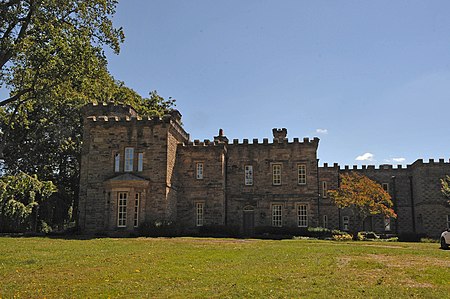Melrose (Casanova, Virginia)
Fauquier County, Virginia Registered Historic Place stubsGothic Revival architecture in VirginiaHouses completed in 1860Houses in Fauquier County, VirginiaHouses on the National Register of Historic Places in Virginia ... and 2 more
National Register of Historic Places in Fauquier County, VirginiaVirginia building and structure stubs

Melrose, also known as Melrose Castle, is a historic home located near Casanova, Fauquier County, Virginia. The house was built between 1856 and 1860, and is a two-story, five-bay, L-shaped Gothic Revival style dwelling. It features a three-story-octagonal tower in the center bay and castellation along the parapet. The house was enlarged considerably around 1920 through a large addition to the west end for expanded service areas.It was listed on the National Register of Historic Places in 1983.
Excerpt from the Wikipedia article Melrose (Casanova, Virginia) (License: CC BY-SA 3.0, Authors, Images).Melrose (Casanova, Virginia)
Rogues Road,
Geographical coordinates (GPS) Address Nearby Places Show on map
Geographical coordinates (GPS)
| Latitude | Longitude |
|---|---|
| N 38.673055555556 ° | E -77.710277777778 ° |
Address
Rogues Road 8871
20187
Virginia, United States
Open on Google Maps




